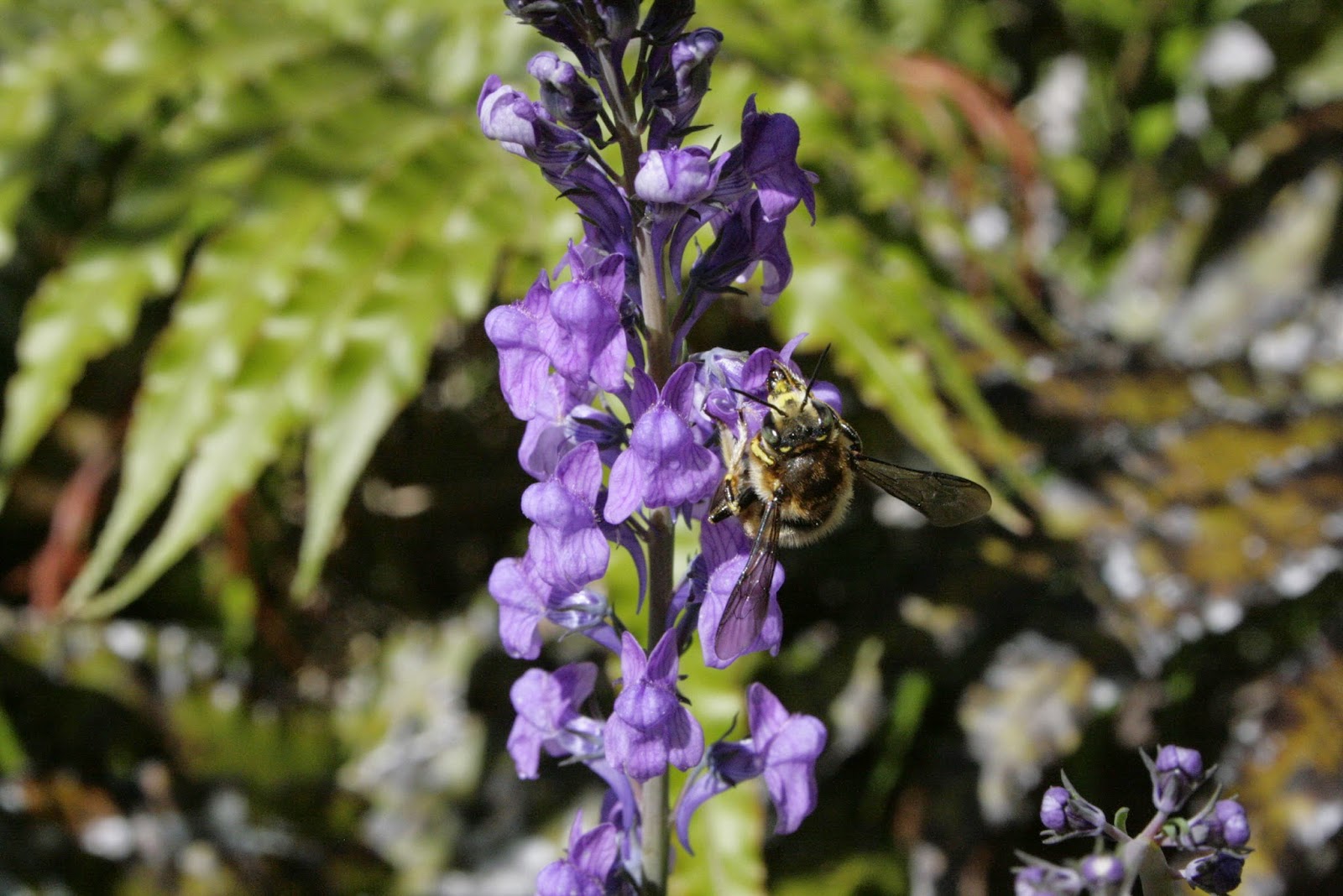For my upcoming show, I've been spending a lot of time in two places - in the garden photographing bees (spring!) and at my desk, painting … yes, bees.
Today I was exceedingly puzzled.
There are honey bees on the lemon flowers and the gone-to-flower chinese cabbage.
There are honey bees and bumblebees on the crabapple flowers.
And there are bumblebees on the foxgloves and the lavender.
But there are two very odd bees on the purple toadflax.
They hovered, instead of flying in that swinging, focused way that honey bees and bumbles do. They were visiting flowers, but also sat in the sun on leaves, which only sick honey bees do.
And they also made a different noise.
They looked like wasps in patterning, but just like a bee in shape and fuzziness. Unlike honey bees they had lots of cream fur on their legs.
I looked 'em up. They are the wool carder bee, Anthidium manicatum. A newish species to invade New Zealand. They collect fluff off plants like lamb's ear and use it to make a nest to lay and egg or two in. Aparently some people in North America grow plants in order to encourage them, much as we grow swan plant for Monarch butterflies.
Should we be concerned about them in New Zealand? I'm not sure. They are solitary, but in other countries where they are found, the males are very aggressive and will patrol bushes where the females are foraging, and chase off other bees. Jo-Anne Soper is studying their spread here. She seems to think they may be a threat to our solitary native bees, which have actually been thriving well up until now, as they like to make their burrows in open clay, like the sides of roads and farm tracks. They seem to co-exist well with honey bees in Europe.
I am fascinated by the complexity of interactions between environments and species on this Earth. Tip it one way, even extremely slightly, and the whole boat sometimes rocks. Or, sometimes, doesn't.



New Zealand has big problems already with feral animals and plants. I hope you reported your findings to the Ag Dept. This deserve publicity in your newspaper too. It looks rather like poor procedures in quarantine or importing. Very worrying.
ReplyDeleteIt would, indeed, be unfortunate if this intruder did harm the indigenous bee population. Animals and insects are no different to humans. In fact I'n many ways they are even better at destroying their 'enemies' and ensuring their own survival.
ReplyDeleteTrouble is how would you even begin to eradicate the newcomers? And how the hell did they invade? Given New Zealand's past experiences, I would be more than a little fearful of the new bees.
ReplyDeleteWe have an invasive (American) insect that is attacking our Chestnut trees. There is now talk of bringing in another non-native insect to deal with the problem, but no-one seems to know if the second insect will bring with it any harmful effects. I think we meddle with nature at our peril.
ReplyDeleteWe have a very mixed record with introducing one animal to get rid of another here in Oz. For example the dreadful cane toad in Queensland.
DeleteLouise, GB, YP and Cro… your reactions are natural. However the good news is that I have it on very good authority of my famous entomologist friend (you know Peter don't you GB?) that we don't need to worry.
ReplyDeleteYes, they are not indigenous, but they seem to have settled in with little impact in the four years since they first arrived (entry point: three ports - possibly they nested in timber masts of yachts, it is thought) but no, there is no way they could be eradicated now anyway.
We have pretty good biosecurity but while people do not confess at the arrival gates any seeds, honey products, fruit, unwrapped food, raffia, shells, timber items, etc etc, it will always be tricky.
Re. these bees, all Peter said was 'see if you can find their nests - they are interesting'.
Seen one today! First time ever. Got a good photo of it. They don't seem to like the colder weather, I noticed it wasn't up and about quite late in the morning when all the wasps and bees were already up and into their day.
ReplyDelete